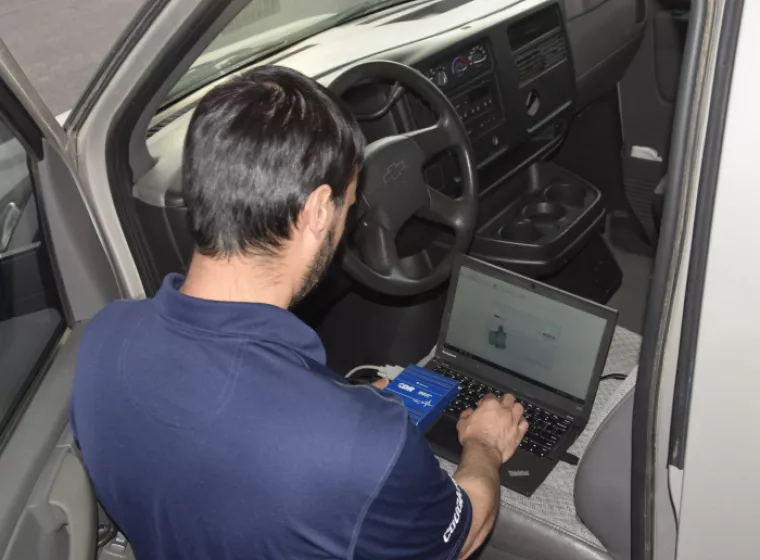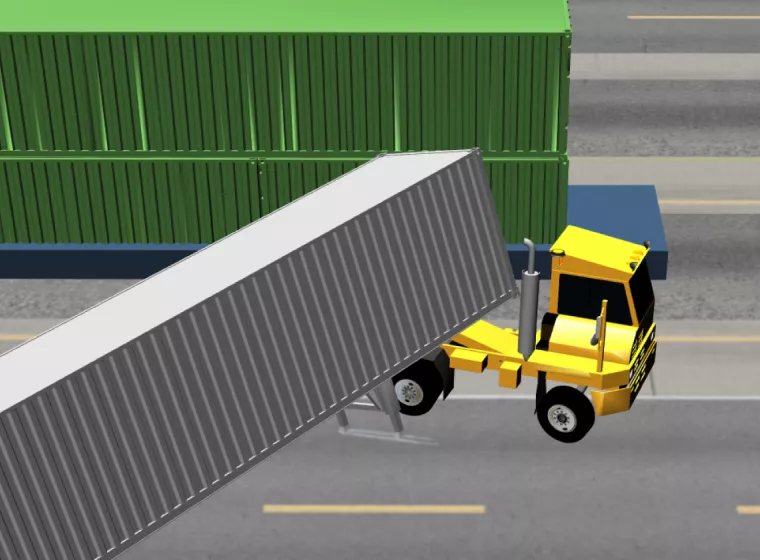July 28, 2023
Notices of proposed rulemaking would require automatic emergency braking (AEB) on passenger cars, light trucks, and heavy vehicles
On May 31, 2023, the National Highway Traffic Safety Administration announced a notice of proposed rulemaking that would require automatic emergency braking (AEB) and pedestrian AEB systems on passenger cars and light trucks. On June 22, 2023, NHTSA and the Federal Motor Carrier Safety Administration announced a further notice of proposed rulemaking that would require heavy vehicles to have AEB systems as well.
The notices fulfill a mandate in the Bipartisan Infrastructure Law. If adopted as proposed, nearly all U.S. vehicles will be required to have AEB technology three years after publication of a final rule.
An AEB system uses multiple sensor technologies that work together to try and detect vehicles or other objects in a vehicle's forward path and provide a mitigating action in a crash-imminent situation. The system can automatically apply the brakes if the driver has not done so, or, if needed, may apply more braking force to supplement the driver's braking.
Proposed rule for AEB systems on passenger cars and light trucks
The proposed rule for passenger cars and light trucks — those having a gross vehicle weight rating of 10,000 pounds or less — is a key component of the Department of Transportation's National Roadway Safety Strategy (NRSS) to address "the national crisis" traffic fatalities and serious injuries. NHTSA projects that this proposed rule would save at least 360 lives a year and reduce injuries by at least 24,000 annually. It would require all cars to be able to automatically brake and avoid contact with a vehicle in front of them at closing speeds of up to 50 mph, and it would require pedestrian AEB that could recognize and avoid pedestrians, including at night, under the prescribed testing protocols.
Proposed rule for AEB systems on heavy vehicles
The proposed rule for heavy vehicles — those having a gross vehicle weight greater than 10,000 pounds, such as heavy-duty trucks and buses — is also a component of the NRSS. According to NHTSA statistics, there are approximately 60,000 rear-end crashes a year in which a heavy vehicle is the striking vehicle. Once implemented, NHTSA estimates the proposed rule will prevent 19,118 crashes, save 155 lives, and prevent 8,814 injuries annually. The proposed standard would require the technology to automatically brake in response to another vehicle at closing speeds ranging between 6 mph and roughly 50 mph situations, under the prescribed testing protocols.
If adopted as proposed, nearly all U.S. vehicles will be required to have AEB technology three years after publication of a final rule.
Recommendation for public comment
Public comments on these notices of proposed rulemaking will be accepted through the Federal Docket Management System within 60 days of their publication in the Federal Register. That means the comment deadlines for the proposed rules requiring AEB systems closed July 30 for passenger cars and light trucks but remains open until Aug. 21 for heavy vehicles.
Additional information about public feedback on DOT guidance can be found here.
What Can We Help You Solve?
Exponent's multidisciplinary experts from our Vehicle Engineering, Human Factors, Biomechanics, Electrical Engineering & Computer Science, and Data Sciences practices actively support clients in bringing new vehicle technologies to market, including technical review, and evaluating whether design elements comply or conflict with new and evolving regulatory rulings.

Transportation Product Evaluations
Quantify product performance, analyze system and component failures, and addresses claims of defects.

Data Collection & Analysis for Accident Reconstruction
Retrieve, preserve, and interpret critical onboard vehicle data.

Accident Reconstruction & Analysis
Crash analysis and transportation accident investigation and reconstruction services.

Biomechanical Testing & Modeling
Uncover the root cause of injuries with robust and advanced biomechanical analysis.

Human Factors
Comprehensive human factors support, including for making products safer, improving work environments, investigating accidents, and informing product design.

Vehicle Engineering
Rigorous research on the safety and performance of all types of transport and cutting-edge technologies.






